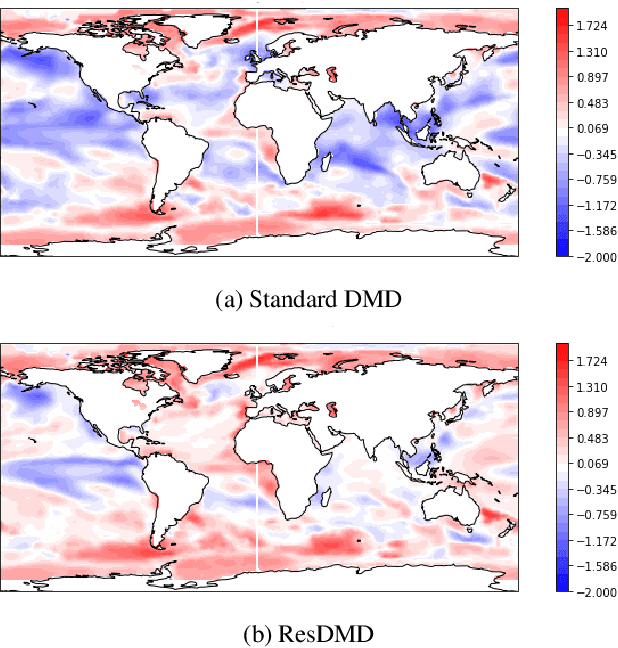Decadal Forecasts with ResDMD: a Residual DMD Neural Network
Paper and Code
Jun 21, 2021



Operational forecasting centers are investing in decadal (1-10 year) forecast systems to support long-term decision making for a more climate-resilient society. One method that has previously been employed is the Dynamic Mode Decomposition (DMD) algorithm - also known as the Linear Inverse Model - which fits linear dynamical models to data. While the DMD usually approximates non-linear terms in the true dynamics as a linear system with random noise, we investigate an extension to the DMD that explicitly represents the non-linear terms as a neural network. Our weight initialization allows the network to produce sensible results before training and then improve the prediction after training as data becomes available. In this short paper, we evaluate the proposed architecture for simulating global sea surface temperatures and compare the results with the standard DMD and seasonal forecasts produced by the state-of-the-art dynamical model, CFSv2.
 Add to Chrome
Add to Chrome Add to Firefox
Add to Firefox Add to Edge
Add to Edge